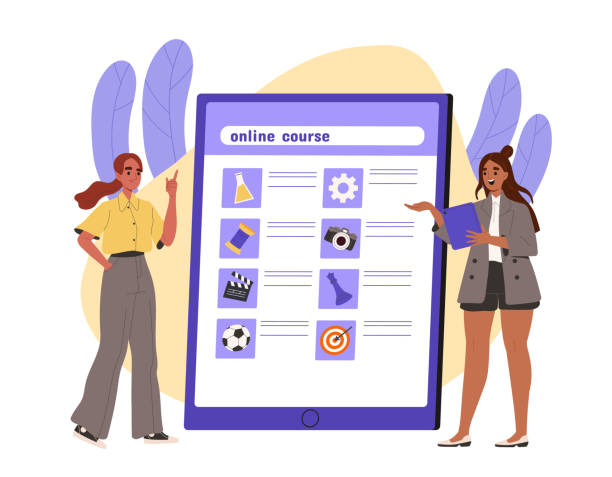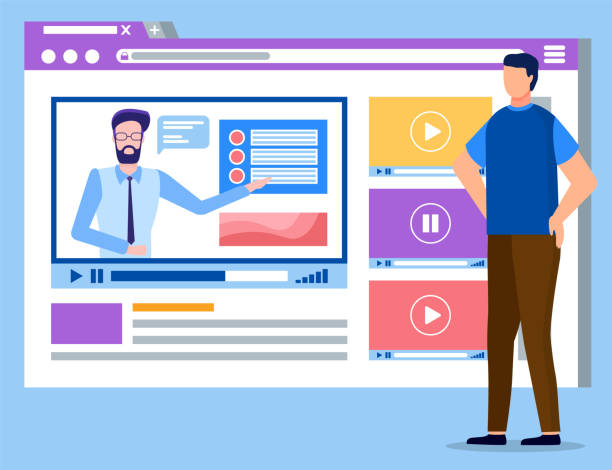Introduction to the Importance of User-Friendly Website Design in Today’s World

In the current digital age, having a website is not merely an option, but a necessity.
However, simply having a website is not enough; real success is achieved when your website has a user-friendly and effective design.
A website that can meet users’ needs and provide a pleasant experience for them.
#Userfriendliness and #User_Experience are two main pillars on this path.
The importance of #User_Interface (UI) and #User_Experience (UX) in this regard is undeniable.
A user-friendly website means a platform where visitors can easily navigate, find the information they need, and achieve their goals with minimal effort.
This includes elements such as loading speed, compatibility with various devices (responsiveness), content clarity, and ease of use of forms and buttons.
Undoubtedly, a user-friendly website design is a foundation for the success of any online business and plays a key role in attracting and retaining customers.
This explanatory and educational approach helps you to better understand how a website affects your audience and how you can convert them into loyal customers.
By focusing on these principles, it can be expected that visitors will not only stay on your site but also return repeatedly and even recommend it to others.
This directly impacts your SEO and website ranking in search engines.
Does your current site showcase your brand’s credibility as it should? Or does it drive potential customers away?
Rasawab, with years of experience in professional corporate website design, is your comprehensive solution.
✅ A modern, beautiful, and brand-consistent website
✅ Significant increase in lead generation and new customers
⚡ Contact Rasawab now for a free consultation on corporate website design!
User Experience (UX); The Heart of Every User-Friendly Website Design
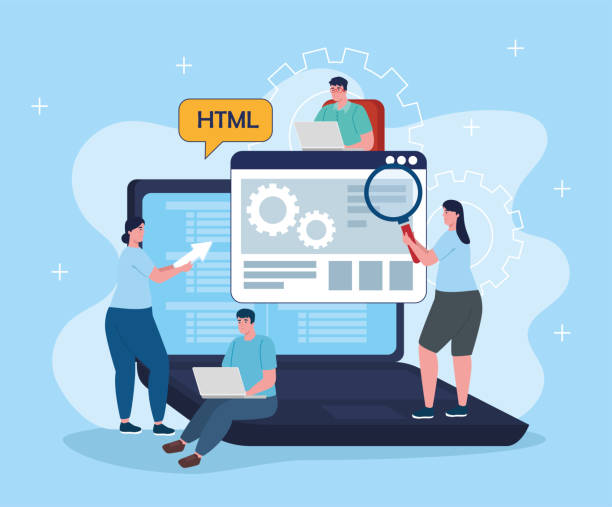
User Experience, or UX, refers to the overall feeling and attitude of a user when interacting with a product or service.
In the context of a website, UX encompasses all aspects of a user’s interaction with your site: from the moment they enter until they leave.
An excellent user experience encourages users to stay longer on the site, return repeatedly, and perform desired actions (such as purchasing or registering).
This analytical section delves into the importance of UX.
Factors such as ease of access to information, intuitive navigation, page loading speed, and attractive visual design all play a role in shaping a positive UX.
The main goal of every user-friendly website design is to create a smooth and hassle-free path for the user to easily achieve their goals.
A site with poor UX can lead to an increased bounce rate and decreased user engagement, even if it has very good content.
In fact, UX is not just about visual aesthetics; it’s about the functionality, accessibility, and enjoyment of using the site.
Considering user feedback, conducting user tests, and analyzing their behaviors are essential for continuous UX improvement.
This expert perspective shows you how investing in UX can not only increase customer loyalty but also directly impact your business growth.
Designing a user-friendly website means investing in the future of your business.
Fundamental Principles of User Interface (UI) in Web Design

The User Interface, or UI, refers to the visual look and feel of a website; meaning all elements that a user interacts with, from buttons and menus to images and input forms.
While UX deals with the user’s overall “feel,” UI is concerned with “how” information and site functionalities are presented.
This specialized and guiding section introduces you to the key UI principles that are vital in any user-friendly website design.
These principles include design consistency, appropriate feedback, clarity, and efficiency.
Adhering to these principles helps users quickly become familiar with the site environment and use it easily.
For example, using harmonious colors and fonts, logical arrangement of elements, and placing Call-to-Action (CTA) buttons in appropriate locations all contribute to improving UI.
Below, a table of important UI principles and their explanations is provided:
| UI Principle | Explanation |
|---|---|
| Consistency | Uniform use of elements, colors, and fonts throughout the site for predictability and ease of learning. |
| Feedback | Providing visual or textual response to the user after each interaction (e.g., clicking a button). |
| Clarity | Ensuring all elements and messages are understandable and clear. |
| Efficiency | Designing paths for the user to reach their goal with minimal effort. |
| Accessibility | Ensuring the site is usable for individuals with various abilities. |
These principles form the foundation of every user-friendly website design and help designers create interfaces that are both beautiful and efficient.
Attention to detail in UI leads to a pleasant and memorable experience for users.
The Importance of Navigation and Information Architecture in Ease of Access
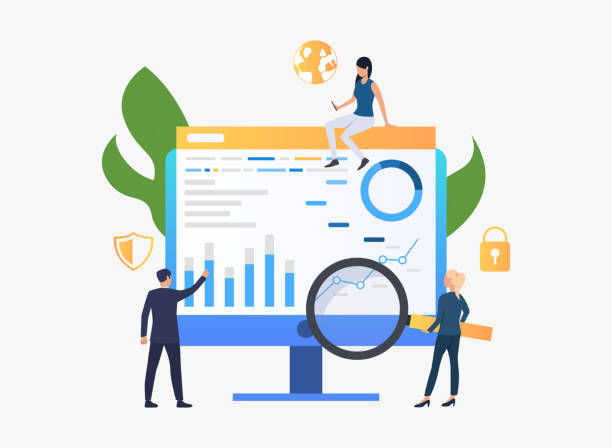
Navigation and Information Architecture (IA) are two vital elements that directly impact the ease of use and content discoverability on a website.
Good navigation acts like a clear roadmap, helping users easily find their way around the site and access the information they need.
This guiding section emphasizes the importance of these two concepts in user-friendly website design.
Information Architecture refers to organizing and labeling content in a logical and understandable manner.
This includes how menus, categories, and internal links are structured.
When IA is properly designed, users can find what they are looking for with minimal effort, and even discover new content.
Visual navigation and a logical page structure directly affect conversion rates and user satisfaction.
The question is, can your users quickly access the contact us section or the shopping cart? Is your product catalog organized in a way that makes searching easy? The answers to these questions are key to strong information architecture and efficient navigation.
Using clear visual cues, understandable menus, and robust search capabilities all help improve these aspects.
Furthermore, this section can be entertaining if accompanied by examples of websites with good and bad navigation to clearly illustrate the differences.
The importance of a user-friendly website design with optimized navigation is that users feel more in control and are less likely to get confused, which results in increased dwell time and reduced bounce rates.
Do visitors leave your e-commerce site before making a purchase? Don’t worry anymore! With Rasawab’s professional e-commerce website design services, solve the problem of not converting visitors into customers forever!
✅ Significant increase in conversion rates and sales
✅ Unique and engaging user experience
⚡ Contact us now for a free consultation!
Responsiveness; A Necessity for Every User-Friendly Website Design in the Mobile Age

In today’s world, where mobile phone usage for internet access is on the rise, Responsive Design is no longer considered a luxury, but a necessity.
A responsive website means its design automatically adapts to the screen size of the user’s device (mobile, tablet, laptop, or desktop) and provides the best user experience.
This informative and specialized section highlights the importance of responsiveness in user-friendly website design.
Google has also announced for years that website responsiveness is one of the important ranking factors in its search results (Mobile-First Indexing).
This means that if your site is not optimized for mobile, it may rank lower in search results and receive less traffic.
A poor mobile user experience can cause visitors to quickly leave your site and turn to a competitor who offers a better experience.
Responsive design involves using flexible grids, flexible images, and media queries so that the site’s layout changes based on screen dimensions.
Ensuring that buttons are large enough, fonts are readable, and forms are easy to use on touch devices are among the challenges of this type of design.
For success in the online space, every user-friendly website design should be built with a mobile-first approach from the outset to ensure that the user experience is consistent and optimized for all visitors, regardless of the device they use.
This approach guarantees that you will not lose a large segment of your audience due to incompatibility.
Engaging Content and Optimization for Readability
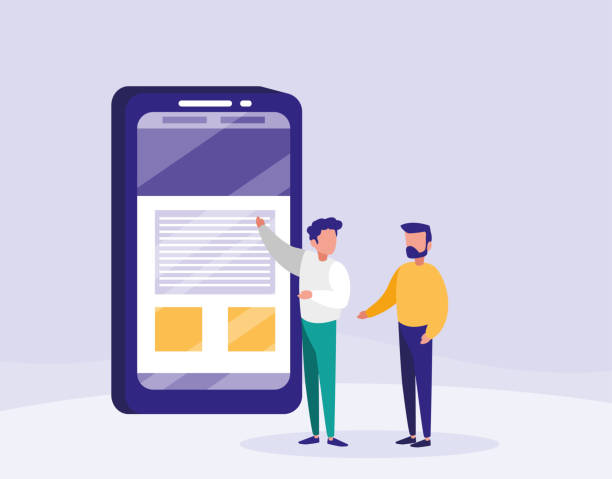
Content is king, but not just any content.
Content that is engaging, relevant, and optimized for readability forms the heart of a user-friendly website design.
In this section, we discuss how to create thought-provoking and engaging content that not only attracts users but also encourages them to interact more with the site.
Your content should not only be informative but also presented in a way that is easy and pleasant to read.
Using short paragraphs, clear headings and subheadings, bulleted and numbered lists, and sufficient whitespace all contribute to improved readability.
Optimizing content for readability also includes choosing an appropriate font, a legible font size, and suitable color contrast between text and background.
Additionally, using relevant images, videos, and infographics can help break up large blocks of text and make the content more appealing.
Thought-provoking content makes users think and encourages them to express their opinions or look for more information.
This type of content can include surveys, quizzes, or articles that offer new perspectives.
Ultimately, every user-friendly website design must include a strong content strategy that continuously produces fresh and valuable content.
This not only helps retain current users but also assists in attracting new visitors through SEO.
Excellent content not only informs users but also provides them with a good experience and makes them want to return to your site.
Optimizing Website Speed and Performance
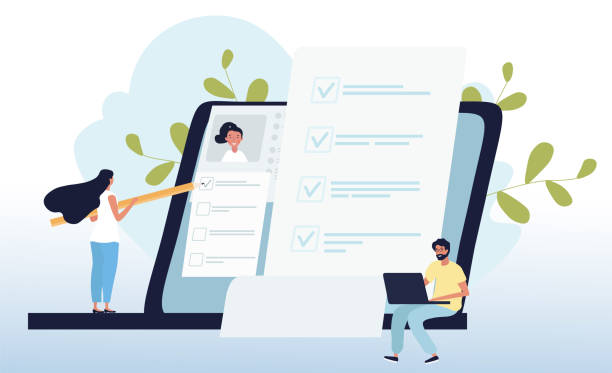
Website loading speed is one of the most critical factors in user-friendly website design and online success.
Today’s users are impatient; research shows that most users abandon websites that take more than a few seconds to load.
This specialized section provides the necessary guidance for optimizing site speed and performance.
Factors such as image size, the number of HTTP requests, caching, and hosting quality all affect site speed.
Optimizing images (compressing without quality loss), reducing CSS and JavaScript codes, using a CDN (Content Delivery Network), and choosing a reliable hosting provider are among the measures that can significantly increase your site’s speed.
Website speed analysis tools like Google PageSpeed Insights can help you identify issues and provide solutions.
A fast website not only offers a better user experience but also helps improve SEO and reduce bounce rates.
Search engines give higher scores to websites that load quickly, which can boost your site’s ranking in search results.
Below, a table of the most important factors affecting website speed and their optimization solutions is provided:
| Affecting Factor | Optimization Solution |
|---|---|
| Image Size | Image compression, using next-gen formats (WebP), lazy loading. |
| CSS and JS Files | Minification, combining files, Gzip compression. |
| Browser Caching | Enabling browser caching to store files on the user’s system. |
| Server Response | Choosing quality hosting and database optimization. |
| CDN (Content Delivery Network) | Using a CDN to deliver content from the closest server to the user. |
These measures not only help create a user-friendly website design that is fast and efficient but will ultimately lead to increased conversions and business revenue.
Speed is a vital factor in digital success.
Accessibility; Designing for All Users

Accessibility in user-friendly website design means that your website should be usable by all individuals, including people with disabilities.
This includes individuals with visual, auditory, motor, or cognitive impairments.
An accessible website is not only an ethical act but also a legal requirement in many countries and a great opportunity to expand your audience.
This educational section introduces you to the key principles of accessibility.
For example, using alternative text (alt text) for images, subtitles for videos, keyboard navigation, and appropriate color contrast are among the measures that help improve accessibility.
WCAG standards (Web Content Accessibility Guidelines) provide an international framework for ensuring web content accessibility.
Adhering to these standards helps you design a site that is usable by a wide range of users.
Did you know that over a billion people worldwide have some form of disability? Ignoring accessibility means losing a large segment of your potential audience.
A truly user-friendly website design is one that does not exclude anyone from accessing information or services.
This also has a positive impact on your site’s SEO, as many accessibility optimization techniques overlap with search engine ranking factors.
By building an accessible website, you not only fulfill your social responsibility but also expand your customer base.
How much does losing business leads due to an unprofessional website cost you? Solve this problem forever with professional corporate website design by Rasawab!
✅ Increased credibility and trust among potential customers
✅ Easier attraction of new business leads
⚡ Get a free consultation now!
Continuous Website Testing and Optimization
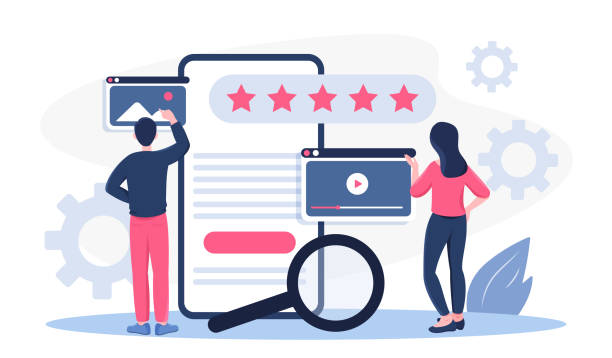
After designing and launching a user-friendly website, your work is not over.
In fact, this is just the beginning.
Websites require continuous testing and optimization to ensure they always provide the best user experience.
This explanatory and guiding section addresses the importance of the iterative process of testing and optimization.
Conducting User Testing helps you identify your site’s weaknesses from the perspective of real users.
These tests can include A/B tests, Heatmaps, user session recordings, and surveys.
By analyzing the collected data, you can identify areas that need improvement and implement the necessary changes.
Continuous optimization means analyzing user behavior, tracking key metrics (such as conversion rate, bounce rate, time on site), and conducting ongoing experiments to improve site performance.
Can changing a button’s color increase the click-through rate? Can simplifying the checkout process lead to increased sales? These are questions that can only be answered through testing and optimization.
Tools like Hotjar or Google Analytics can provide you with valuable information about user behavior.
A user-friendly website design is dynamic and evolves with the changing needs and expectations of users.
Therefore, the testing and optimization process should never stop.
This approach allows you to always stay one step ahead of the competition and ensure that your website consistently meets the needs of your audience.
Future Trends and Continuous Development of User-Friendly Website Design
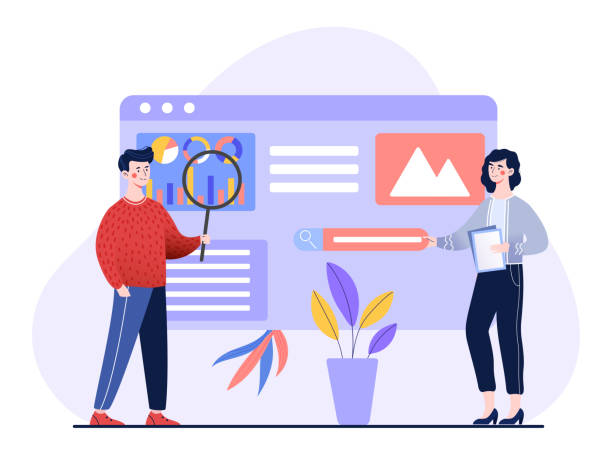
The world of web is constantly changing and evolving, and what is considered a user-friendly website design today may become obsolete in the near future.
This informative and analytical section discusses future trends in web design and the importance of continuous development to maintain a competitive edge.
Artificial Intelligence (AI) and Machine Learning are revolutionizing user experience, from advanced chatbots to content personalization based on user behavior.
Virtual Reality (VR) and Augmented Reality (AR) also hold great potential for creating more interactive and immersive experiences.
Voice Search and Voice User Interfaces (VUIs) are also growing, and websites need to be ready to respond to these new interaction methods.
Furthermore, the importance of minimalist and Clean Design, which focuses on simplicity and efficiency, continues to increase.
Continuous development in web design means staying updated with the latest technologies and best practices, and being prepared to adapt to changes in user behavior.
This includes investing in design team training, using advanced tools, and experimenting with new approaches.
A user-friendly website design should not remain static; rather, like a living organism, it must grow and evolve over time.
This long-term approach ensures that your website will be able to attract and retain audiences not only today but also in the coming years, serving as a strategic asset for your business.
By looking to the future and anticipating user needs, you can always stay one step ahead.
Frequently Asked Questions
And other services of Rasawab Advertising Agency in the field of advertising
Smart Social Media: A fast and efficient solution for user engagement with a focus on precise audience targeting.
Smart Content Strategy: Revolutionize website traffic growth with marketing automation.
Smart Advertorial: A dedicated service for increasing website traffic growth based on real data.
Smart Conversion Rate Optimization: Designed for businesses seeking online growth through the use of real data.
Smart Website Development: A new service to enhance campaign management through key page optimization.
And over hundreds of other services in internet advertising, advertising consultation, and organizational solutions
Internet Advertising | Advertising Strategy | Advertorial
Resources
The Importance of User-Friendly Website Design in SEO
Strategies for Efficient Website Design for Digital Marketing
How to Have a Successful Website in Digital Marketing?
Website Design Training for Entering the World of Digital Marketing
? With Rasawab Afarin, your business takes flight in the digital world! We offer innovative and results-driven solutions for your growth, including comprehensive services such as responsive website design, SEO, and content marketing.
📍 Tehran, Mirdamad Street, next to Bank Markazi, Kazeroon Jonubi Alley, Ramin Alley, No. 6

